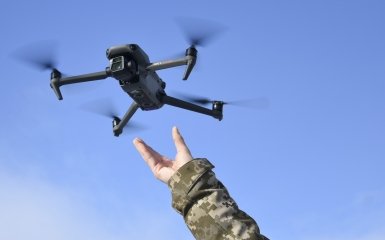Neither the first nor the second generation of Russian EW is capable of jamming Ukrainian UAVs.
Russian EW systems are unable to cope with Ukrainian drones
In the absence of American aid and a critical shortage of ammunition, Ukraine has had to adapt to the situation by using thousands of explosive-laden drones to target Russian equipment and even pursue and detonate individual Russian soldiers. Until December, Ukraine built about 50,000 UAVs per month at a price of several hundred dollars per piece.
To date, UAVs are perhaps the most lethal weapon in Ukraine's arsenal, and the Russians know it. Therefore, they install radio jammers on more and more vehicles. In theory, the jammer should block the radio signal between the UAV and its operator, throwing the drone off course.
The problem for the Russians is that their jammers just don't work. The first generation of EW, the RP-377, mostly did not stop UAVs. Now the second generation - "Volnorez" - does not work. The question remains whether the third generation of interceptors, "Sania", will be able to surpass their predecessors. It would be fair to say that for many Russian troops in Ukraine, this issue is an existential one, the publication writes.
So, at the beginning of the war, the Kremlin used portable radio jammers RP-377, which were designed to protect Russian troops in Syria from bombs detonated by radio communication. The advantage of RP-377 was that they were available in fairly large quantities.
The RP-377 is a backpack system: it is powered by portable batteries, not the vehicle's engine. Therefore, when the RP-377 tries to jam multiple frequencies - a power-intensive mode of operation - it sacrifices range.
Yes, the Ukrainian UAV can be blinded as it heads towards its target. But he will be blinded when he is already on course for a devastating blow.
When the shortcomings of the RP-377 became obvious, the Kremlin began to install more and more specially designed Volnorez vehicle-mounted obstacles, which have a range of 800 m.
But the "Walnorez" is useless if it is not installed correctly, and many of them are very poorly made. Also, Volnorez jammers are prone to overheating, and their antennas leave a dead zone in the cone above obstacles, experts say.
So now the Russians are abandoning their practically new Volnorez stations, which were state-of-the-art just a few months ago, and replacing them with even newer Saniya stations, which theoretically have a range of almost one and a half kilometers.
The rates cannot be higher. If the "Sanias" are well made and powerful enough, and really provide reliable protection, they can begin to level Ukraine's advantage in the use of drones, which is one of its few advantages, Forbes notes.



